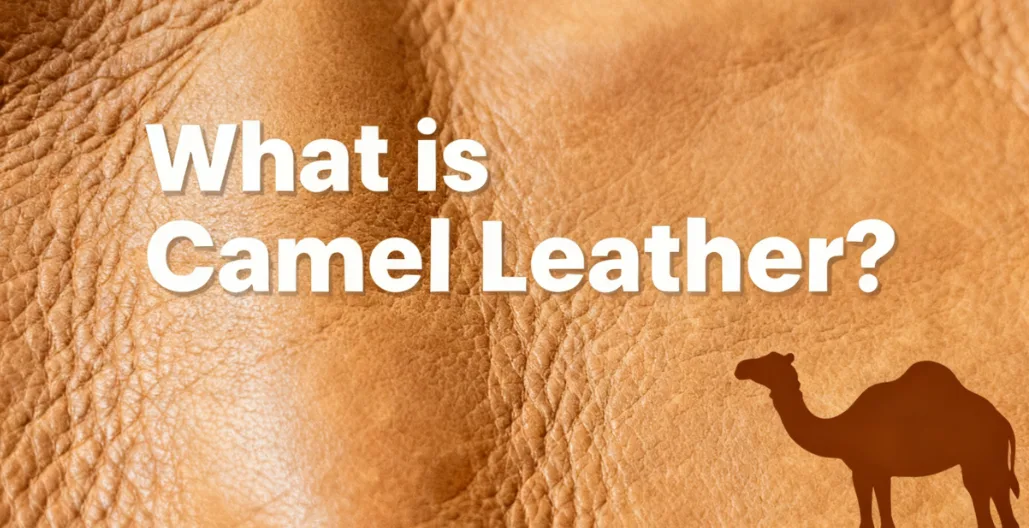Summary:Camel leather is valued for its durability and unique texture, commonly used in custom camel leather bags and other camel leather products. This guide provides a complete overview of its features, pros and cons, applications, and leather care tips.
Camel leather is a premium material known for its natural texture, flexibility, and long-lasting durability. It holds a special place in the leather industry, often used in camel leather bags, wallets, shoes, and other camel leather products. This comprehensive guide explores the origins, characteristics, advantages, and disadvantages of camel leather, along with practical leather care tips, helping readers make informed choices when selecting and using this distinctive leather.
Contents
What is Camel Leather?
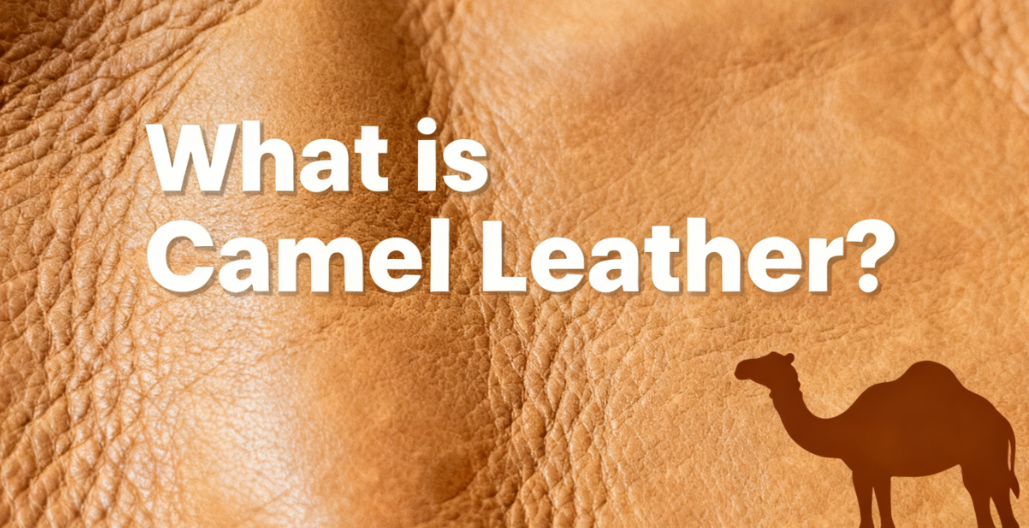
Definition
Camel leather, also called camel hide leather, is a premium material obtained from the hides of different camel species. It is known for its natural texture, flexibility, and durability, making it ideal for high-quality camel leather bags and camel active leather bags.
Source
- Camel species: Primarily sourced from dromedary and Bactrian camels.
- Leather origin: Harvested from the hide after careful processing to preserve natural quality.
Leather Types
- Full-grain camel leather: Retains the natural surface and strongest fibers, highly durable.
- Corrected-grain camel leather: Sanded and treated for a smoother and uniform appearance, easier for leather camel bag production.
Difference from Other Leathers
Compared to cowhide or sheepskin, camel leather is lighter yet strong, with unique textures and natural color variations. This makes camel bag leather stand out in style, longevity, and tactile feel.
What Are the Characteristics of Camel Leather?
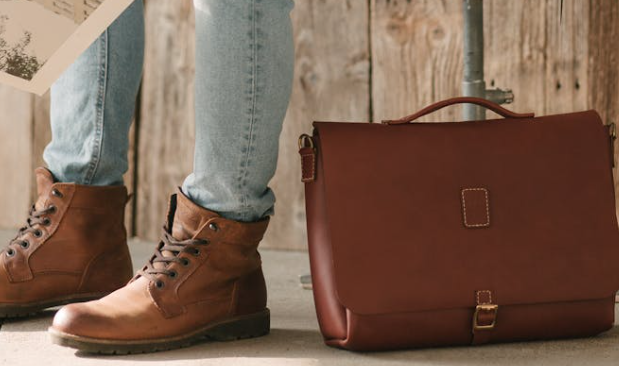
Before diving into the details, it’s important to understand why camel leather stands out. From its unique texture to long-lasting durability, every camel leather bag and camel active leather bag carries characteristics that make it both practical and stylish. In this section, we’ll explore its texture, color, strength, breathability, and how it ages over time, helping you appreciate what makes camel bag leather truly special.
Texture and Color
Camel leather is prized for its natural grain and distinctive markings, which give each piece a unique appearance. The leather ranges from light beige to rich brown tones, often showing subtle patterns from the animal’s hide. This makes every camel leather bag or leather camel bag one-of-a-kind.
Durability and Softness
Despite being lighter than cowhide, camel leather is incredibly strong, with tensile strength averaging 15–18 MPa, making it suitable for daily-use camel bag leather products. At the same time, it remains flexible and soft to the touch, ensuring comfort in bags, wallets, and shoes.
Water Resistance and Breathability
Camel leather naturally resists light moisture due to its dense fiber structure, while still allowing air circulation. This makes camel active leather bags ideal for both humid and dry climates, without compromising longevity.
Aging and Patina
One of the most admired traits is its aging process. Over time, camel leather develops a rich patina and slightly darker hue, enhancing its character and visual appeal. Studies show that well-maintained camel hide leather can last 10–15 years while maintaining durability and elegance.
Advantages and Disadvantages of Camel Leather

Camel leather offers several unique strengths that distinguish it from traditional cow leather. Understanding these differences helps buyers determine whether camel leather is the right fit for their products and target market.
Advantages of Camel Leather
- Exceptional durability – Dense fibers provide tensile strength of 15–18 MPa, often outperforming standard cowhide.
- Unique natural texture – Every hide features distinct grain patterns, giving each product a one-of-a-kind look.
- Lightweight yet strong – Softer and lighter than cow leather while remaining highly resilient.
- Premium appeal – Ideal for high-end goods such as camel leather bags and luxury accessories.
- Better breathability – More breathable than most cow leather, making it suitable for everyday items that contact the skin.
Disadvantages of Camel Leather
- Higher price – Limited supply makes camel leather 20–40% more expensive than cowhide.
- More care needed – Requires regular conditioning to maintain softness and prevent dryness.
- Limited color range – Naturally found in beige and brown tones; fewer color options compared to cow leather.
Camel Leather vs. Cow Leather Comparison
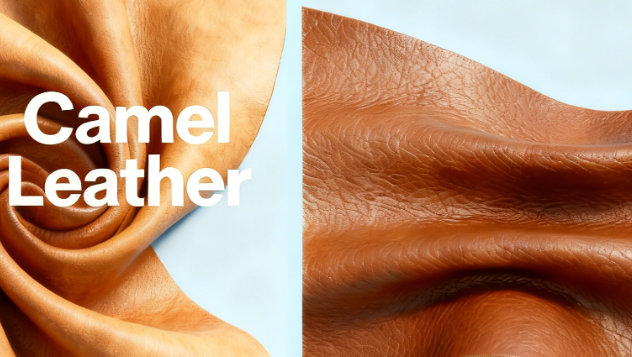
| Feature | Camel Leather | Cow Leather |
|---|---|---|
| Durability | ★★★★★ Higher (15–18 MPa) | ★★★★☆ Strong but slightly lower |
| Softness | More flexible and lighter | Typically thicker and stiffer |
| Texture | Unique, irregular natural grain | Uniform and consistent |
| Water Resistance | Naturally better water resistance | Requires additional treatment |
| Breathability | Higher airflow | Moderate |
| Price | Higher due to limited supply | More affordable and widely available |
| Maintenance | Needs more frequent care | Easier to maintain |
| Premium Appeal | Strong luxury impression | Common, less exclusive |
| Common Applications | High-end camel leather bags, wallets, artisanal goods | Shoes, belts, mass-market bags |
Camel leather absolutely won me over with its durability, unique beauty, and premium vibe. Sure, it’s a bit pricier and demands more pampering, but honestly? I think it’s worth every extra minute of care. Compared to regular cow leather, camel leather has way more personality—it’s like the stylish friend who effortlessly stands out in every photo. So if I want my products to look distinctive and high-value, camel leather is definitely my go-to choice.
How to Care for Camel Leather

Proper care can significantly extend the life of your camel leather bags, wallets, and accessories. Although camel leather is naturally durable, it still deserves a little attention to keep it looking its best.
Cleaning Tips
- Use a soft, dry cloth to gently wipe away dust and surface dirt.
- For deeper cleaning, lightly dampen the cloth with water—never soak the leather.
- Avoid harsh chemicals or alcohol-based cleaners; they can strip natural oils and damage the unique camel leather grain.
- If needed, a mild leather cleaner designed for camel hide leather can be used sparingly.
Conditioning & Leather Treatment
- Apply a thin layer of leather conditioner or beeswax every 2–3 months to maintain softness and prevent cracking.
- Choose a conditioner suitable for natural leather; camel leather absorbs moisture more efficiently than cow leather, so less product is needed.
- Let the leather rest for 10–15 minutes, then gently buff with a soft cloth for a smooth finish.
- For camel bag leather products used daily, regular conditioning helps them develop a richer, more beautiful patina.
Storage & Protection
- Keep camel leather away from direct sunlight, which may cause fading or dryness.
- Store in a cool, ventilated area—avoid plastic bags that trap moisture and lead to mold.
- Use a dust bag or breathable cotton pouch when storing your camel leather bag long-term.
- If the leather gets wet, let it air-dry naturally; never use a hairdryer or heater, which can cause stiffness and cracking.
Extra Tips
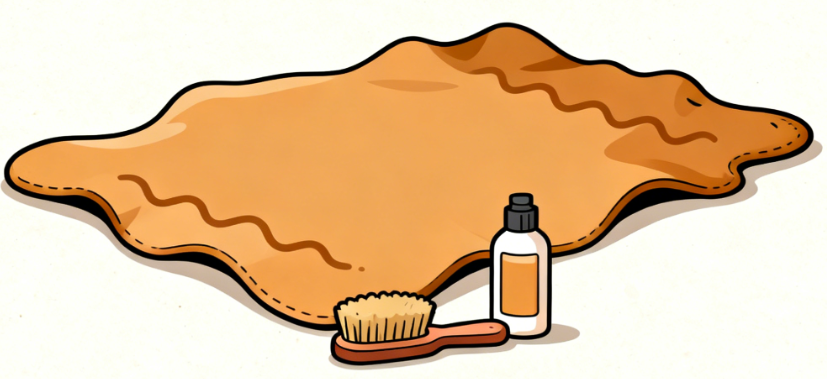
- Rotate bags if possible—giving your camel leather items “rest days” helps maintain shape and longevity.
- Avoid overloading bags; even though camel leather is tough, excessive weight may stretch straps and seams.
- For stains or heavy damage, consult a professional leather care service.
Conclusion
Camel leather is strong, full of character, and naturally stylish, which makes it a great option for anyone who wants products that feel both reliable and a little different. Its fibers are tightly packed, so it holds up well over time, yet it’s surprisingly light—perfect for camel leather bags, camel leather wallets, and everyday camel bag leather accessories. It’s the kind of material that not only lasts but also develops more personality the longer you use it, giving every camel hide leather product a story of its own.
Whether you’re sourcing materials for premium handbags, accessories, or footwear, camel leather provides long-lasting value—provided it receives the right care. As highlighted throughout this Comprehensive Guide, understanding its characteristics, benefits, and maintenance methods allows you to make informed purchasing decisions and get the most out of your leather camel bag products.
If you’re looking to elevate your product line with something truly distinctive, camel leather is absolutely worth considering—your next best-selling camel active leather bag might just start here.
FAQ
Q1. Is camel leather durable?
Yes. Camel leather is known for its dense fiber structure, giving it higher tensile strength and long-term durability compared to many other leathers.
Q2. Are camel leather handbags suitable for daily use?
Absolutely. Its lightweight feel and strong surface make it practical for everyday bags, provided it is kept away from excessive moisture and harsh sunlight.
Q3. How can I tell if camel leather is genuine?
Genuine camel leather typically has a fine, irregular grain pattern, a naturally soft yet firm texture, and a distinctive matte finish. Artificial versions often feel overly smooth and lack depth in texture.
Q4. Does camel leather require special care?
It requires regular conditioning, gentle cleaning, and proper storage—but nothing overly complicated when maintained consistently.
Q5. Is camel leather more expensive than cow leather?
Generally yes, due to its rarity and more complex tanning process.

